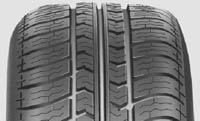|
Компания "Шина-ДВ" - Продажа автошин в Хабаровске на avtoshina-dv.ru! |
 |
 |
|

В 1997 Nissan разработал «гибридный электрический автомобиль» (hybrid electric vehicle HEV), работающий как на бензине, так и на электричестве.
С 1997 года Nissan выпускал одну модель за другой, оснащенные бензиновыми двигателями с прямым впрыском топлива и дизельными двигателями с прямым впрыском (Presage в 1998 году). Тогда же Nissan начал продажи автомобилей Primera and Bluebird с системой Hyper CVT.
В 1998 году появился новый Patrol GR с 6-ти цилиндровым турбодизельным двигателем объемом 2,8 л.
 1999 wurde auf dem Genfer Autosalon ein Prototyp des neuen Almera Tino vorgestellt, der im September 2002 auf dem europäischen Markt in den Handel kam.
Am 27. März 1999 unterzeichneten Nissan und die französische Renault SA eine Vereinbarung zur Bildung einer weltweiten Allianz, um für beide Unternehmen profitables Wachstum zu erzielen. Das Konzeptauto 2000 Fusion, eine Variante des beliebten Primera, ist der Fusion mit Renault gewidmet.
Cedric/Gloria-Autos erhielten die Auszeichnung „Best Car 1999-2000“. Das Extroid CVT-System erhielt den Technologiepreis 1999-2000. Im ersten Quartal 2000 brachte Nissan den Tino Hybrid und den zweisitzigen Hypermini auf den Markt.
Nissan Motor (Nissan Jidosha Kk), a Japanese industrial corporation specializing in the production of passenger cars, trucks and buses of the Nissan and Datsun brands. It also produces sports boats, communication satellites, etc. The headquarters is in Tokyo. The company merged with Renault after the 1998 Asian crisis.
1999 wurde auf dem Genfer Autosalon ein Prototyp des neuen Almera Tino vorgestellt, der im September 2002 auf dem europäischen Markt in den Handel kam.
Am 27. März 1999 unterzeichneten Nissan und die französische Renault SA eine Vereinbarung zur Bildung einer weltweiten Allianz, um für beide Unternehmen profitables Wachstum zu erzielen. Das Konzeptauto 2000 Fusion, eine Variante des beliebten Primera, ist der Fusion mit Renault gewidmet.
Cedric/Gloria-Autos erhielten die Auszeichnung „Best Car 1999-2000“. Das Extroid CVT-System erhielt den Technologiepreis 1999-2000. Im ersten Quartal 2000 brachte Nissan den Tino Hybrid und den zweisitzigen Hypermini auf den Markt.
Nissan Motor (Nissan Jidosha Kk), a Japanese industrial corporation specializing in the production of passenger cars, trucks and buses of the Nissan and Datsun brands. It also produces sports boats, communication satellites, etc. The headquarters is in Tokyo. The company merged with Renault after the 1998 Asian crisis.
|
|